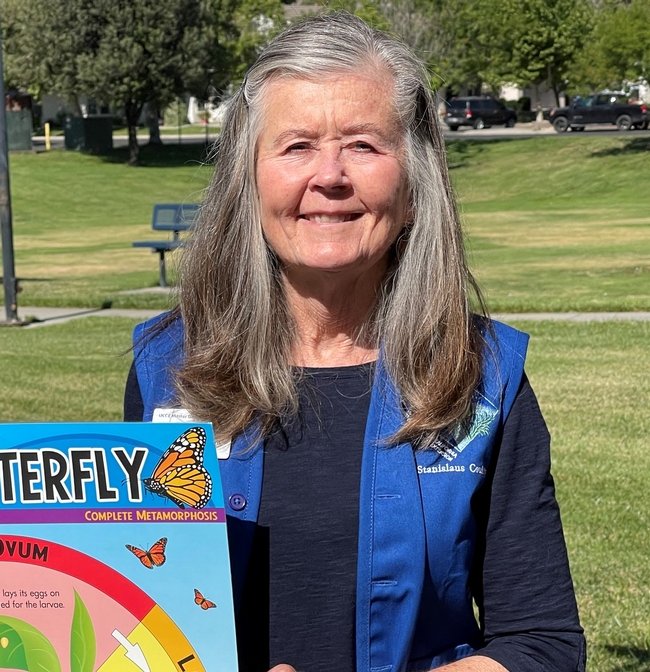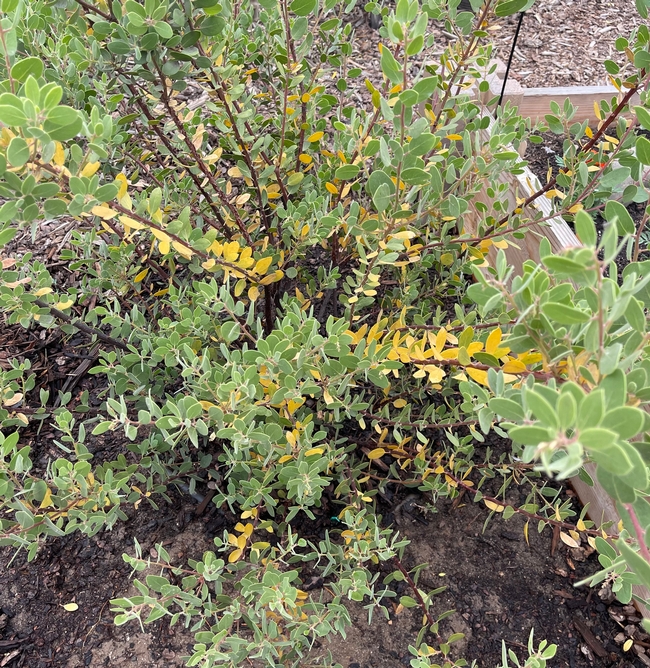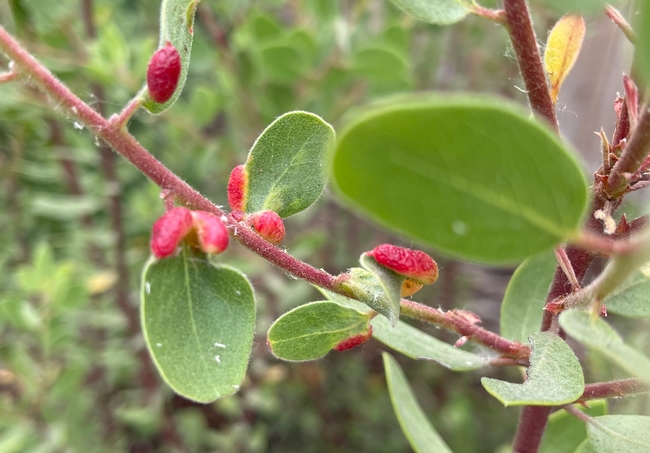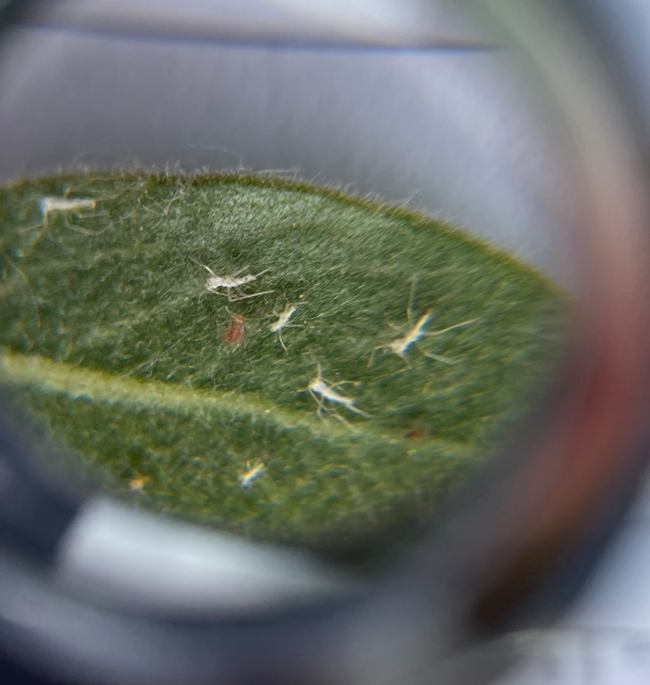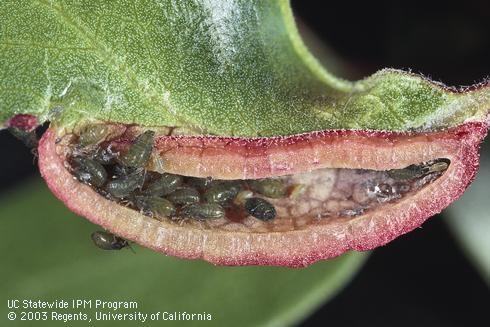One of my favorite things about being a Master Gardener is that I never stop learning about gardens, plants, and insects. Talking to 2022 Stanislaus County Master Gardener program students, who were wrapping up their 18-week course, caused me to reflect on what I have learned. Two of the most valuable pieces of knowledge is whenever I have a garden issue I know where to go for help and information, and to avoid using pesticides whenever possible while letting beneficial insects help manage unwanted pests. The following incident in my garden is an excellent example. . .
Manzanita Pest
Recently two manzanita bushes (Arctostaphylos bakeri ‘Louis Edmunds') were looking a bit stressed with some yellow leaves, several leaves were covered in tiny white insects, and a few leaves had strange red swellings on the edges (see photos).
My first step was to go to the University of California Agricultural and Natural Resources Integrated Pest Management Program (IPM) website to possibly determine what the manzanita plants had. IPM is a wonderful resource with a wide range of links with information on science-based home, garden, turf, and landscape pest management. http://ipm.ucanr.edu/
After doing some exploring on IPM I learned the plants probably had Manzanita leafgall aphid (Tamalia coweni). I knew of galls caused by tiny wasps existing on some trees such as oaks but learning that some aphids can cause galls was new and fascinating knowledge to me!
I wanted confirmation the manzanitas did have leafgall aphids. A local source of assistance is the Help Desk which you can contact via phone, fill out a form online on their website, or go in person at the Agriculture Center with your gardening questions. On Wednesdays from 9am – 12 noon someone is at the Help Desk whom you can call. The Help Desk is a part of the UC Continuing Education Master Gardeners of Stanislaus County's website.
This website also includes links to the Stanislaus Sprout which is a weekly blog packed with information, upcoming classes and workshops, and gardening publications. https://ucanr.edu/sites/stancountymg/
Managing the Manzanita Pest
Manzanita leaf gall aphids and castings viewed through a loupe.
One IPM solution given was to avoid frequent irrigation or with excessive amounts of water. Once manzanita plants are well-established, they thrive with less frequent watering, so I was already not watering them often. Pruning was not recommended since it would stimulate new growth, which could attract more aphids, though I did remove leaves with the galls on them.
Opened manzanita leaf gall with aphids inside. (Jack Kelly Clark, UC IPM)
Take Advantage of These Resources
You do not have to be a Master Gardener to take advantage of the science-based resources I have discussed, the Integrated Pest Management website and the Stanislaus County Master Gardeners' Help Desk. They are available to all, not just to Master Gardeners. Like me, you can continue to learn new information that you can apply to your garden!
Resources and Information
Denise has been a Master Gardener since 2020. All photos taken by Denise Godbout-Avant unless otherwise noted.
